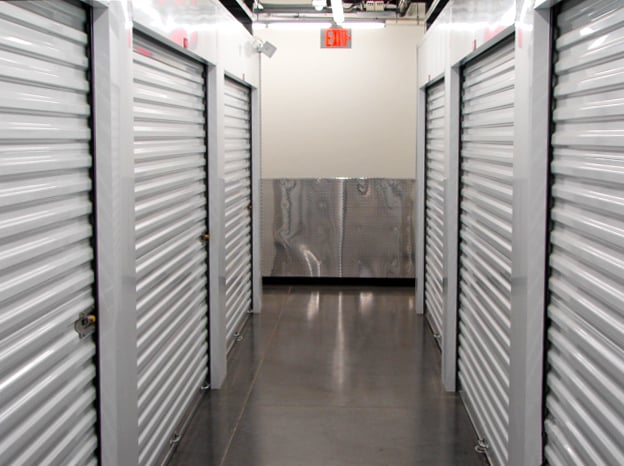DBCI Blog
The Power of Innovation. The Strength of Commitment. Steel roll-up door tips, tricks and industry updates from DBCI.
Metal Hallway Systems for Self-Storage Facilities
Self-storage facilities are specifically designed to provide a variety of storage spaces with roll-up metal doors as the primary means of access into the storage space. While some of these units only open to the outside, it is increasingly common to have some open to interior spaces along hallways. This can be particularly true in buildings that are renovated to become self-storage facilities, but it can also be true in larger new- construction facilities too.
The question that immediately comes up is: What do we construct those hallway walls out of? They need to be durable due to the regular coming and going of people, equipment and belongings. They also need to be easy to clean and present a good appearance so that people using the facility feel comfortable about doing business there. And they need to coordinate easily with the roll-up doors and partitions that separate the storage units from each other—both technically and aesthetically.

The answer is found in pre-engineered metal hallway systems and components that are manufactured by the same company as the roll-up doors. The pre-engineered metal allows for a strong, durable and attractive solution for hallway and unit walls, and the fact that they’re made by the same company as the doors used in the facility means that the coordinating details have likely been designed and refined to work together seamlessly. Here are a few things to be aware of when looking at these systems:
- Hallway Partitions: There are several choices available for the walls that the customers of a facility will see when they walk down the hallway of a self-storage facility. The metal panel that faces out can be an economical 26-gauge panel that is corrugated for strength and attached to metal framing behind it with concealed fasteners. Alternatively, the exposed panels can be flush 24-gauge interlocking panels that allow fasteners to remain concealed except along the top channel. Either way, they can be finished with an attractive, easy-to-clean and durable finish such as glossy white or acrylic-coated Galvalume®.
- Unit Partitions: The partitions that separate the units from each other are typically only visible from within the storage units and need to take the brunt of whatever wear and tear tenants might inflict on them. They are typically non-load-bearing but need to have enough structural integrity to hold up over time. For this use. 26-gauge metal corrugated partitions can work quite well, particularly when braced with 20-gauge top and bottom channels and either a 22- or 20-gauge mid-span reinforcement. They can also be finished to match hallway partitions or left as a Galvalume®
- Wall and Door Protection: Even with a well-designed and constructed hallway and unit partition system, certain areas are always particularly vulnerable to damage and warrant some additional, focused protection. Corners in a hallway are an obvious place to anticipate carts or other traffic bumping into them. The best choice here is to use 18-gauge Galvalume® corner guards that are at least four feet tall, although they can also run full height for the sake of appearance or to provide protection from taller equipment. They can be applied to either flush or corrugated hallway systems and complement the appearance rather than detract from it.
Another place to consider is the base of doors, where pushcarts or other traffic might inadvertently run into the door and cause denting. The solution here is to add an 18-gauge kickplate across the bottom of the door to distribute the impact of any collision and prevent visible damage. It also protects the door finish, which might otherwise suffer from scuffmarks or discoloration.
Paying attention to these details and considering a coordinated system from the door manufacturer helps to reduce surprises during construction or operation of a self-storage facility. To learn more, contact your local DBCI representative.